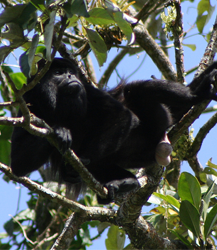Peninsula De Osa - Costa Rica
Biodiversity Hotspot.
Peninsula de Osa – Biodiversity Hotspot
In the south of Costa Rica is the Osa Conservation Area (ACOSA in Spanish), covering the counties of Osa, Corredores, and Golfito of the Puntarenas province, totaling to about 158,721 ha of protected land and 11,675 ha of sea.
The Osa Peninsula is one of the most biodiverse regions on the planet. This megadiversity has led the region to receive immense attention from biologists, primatologists, as well as botanical collectors. It has the most significant wetland ecosystem and mangrove forests of Central America, being a home to:
Impact Indicators
The reforested areas are monitored monthly to provide seedlings with help against environmental threats such as vines, grass, fires, among others.

Central American Squirrel Monkey
(Saimiri oerstedii) – EN

Bairdii Tapis
(Tapirus bairdii)

Geoffroy’s Spider Monkey
(Ateles geoffroyi) – EN

Mantled Howler
(Alouatta palliata) – VU

Panamanian white-faced Capuchin
(Cebus imitator) – VU
our expertise
Thirty-two thousand trees from at least 13 different native species will be planted, capturing carbon and mitigating climate change. Planting preparation will begin at the start of the rainy season in April so that the saplings will survive.
Threatened animal species from the IUCN Red List will have their habitat protected and restored like the central American squirrel monkey (Saimiri oerstedii), the Bairdii Tapis (Tapirus bairdii), as well as wild cats, and other important mammals.
The reforested areas will serve as forested corridors for wandering animals seeking new habitats. As much of their current habitat is fragmented, many animals are looking for natural corridors to connect patches of forest and be able to migrate to new habitat.
The project will provide seasonal employment for the local inhabitants. Every tree will be planted either by the owner of the land to be recovered or by a local inhabitant of the community. Giving them incentives and training and making them feel part of the solution will ensure they protect the trees in the future for the sake of the planet and their own livelihoods.






